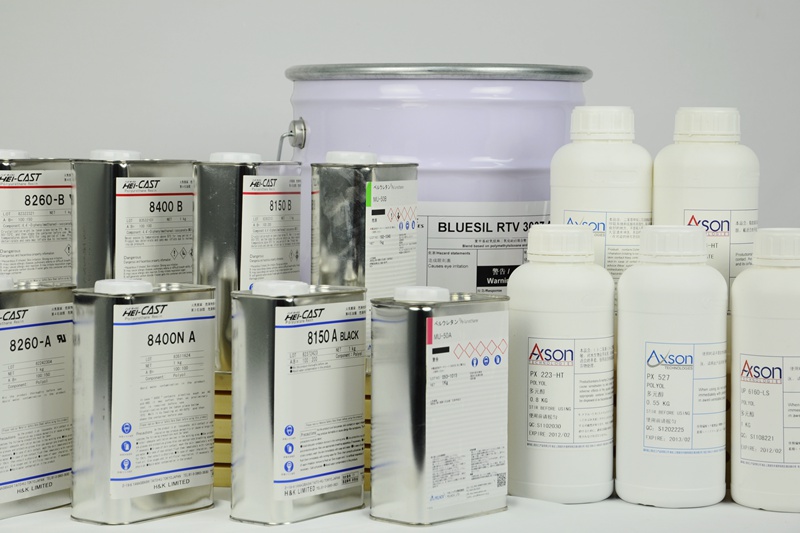Vacuum casting is an effective manufacturing method for creating high-quality prototypes and end-use parts in low volumes. The flexibility, speed, and cost-effectiveness of the vacuum casting process make it a top choice in several industries.
Vacuum casting employs a variety of polyurethane resins as raw materials in creating these parts. So, when using Vacuum casting to make a part, the first thing on the engineer’s mind should be what Vacuum casting material to use.
Given that each vacuum casting material has specific properties which might not suit every project, choosing the right one can be challenging. Therefore, we’ve decided to help you make the right choice with this article.
In this guide, we’ll be looking at how to choose the best vacuum casting material for any project. We’ll also be looking at some of the materials available for vacuum casting and their properties.
What should I look for when choosing a vacuum casting material?
Choosing a suitable Vacuum casting material involves evaluating a series of criteria and making the best choice. These factors cover everything from the intended properties of the product to the final cost per part.
Let’s look at some of these criteria.
Material properties
The properties you want your product should have should be the main factor behind the choice of vacuum casting material. Each material has different properties that will determine the structural and mechanical properties, and the look of the product.
The right vacuum casting material will ideally have the best material properties suited to the product at hand. Some common material properties include:
- Strength: The strength of a product is a critical property. Vacuum casting materials offer different product strengths. So, choosing a material like Polycarbonate can provide more strength than, let’s say, rubber.
- Durability: The durability of a material refers to how long it will last or how the material performs under certain conditions. Some materials have properties like scratch, abrasion, and chemical resistance that make them more durable than others.
- Color: Thanks to dye pigments, you can get a variety of colors with vacuum casting materials. However, if you require transparent or opaque finishes, these are only available in specific materials.
Also, some vacuum casting materials aren’t as easy to color as others. This can increase post-processing costs.
- Surface finish: The surface finish and the outer appearance of the part are important, especially if it’s being made for market testing. So, to get the surface finish required, choose the appropriate material. In this case, selecting a suitable resin can also help save on post-processing costs.
- Temperature resistance: If the part is intended for temperature-sensitive applications, you can’t just use any vacuum casting material. The best resins for the job would be temperature-resistant ones like Polycarbonate or PMMA.
- Flexibility/Rigidity: Some applications can need flexible materials like rubber, while others require a more rigid structure. Choosing the right material helps decrease the chances of the product failing during operation.
Other properties to look out for include UV resistance, hardness, etc.
Finally, you should know that you can also combine two or more resins using a process called over molding. Using this process, you can create a product with the material properties of several polyurethane resins.
Purpose of the product
The intended purpose of the product should also play a role in selecting the vacuum casting material. For example, if the product is going to be functional, you should choose the appropriate material and post-processing methods accordingly.
However, if the product is a visual prototype, you can afford to dwell on only aesthetics. Since the internal properties won’t matter much, product designers can use various materials to obtain a great look.
Cost per part
Finally, the last thing to consider will be the cost of the Vacuum casting resin. Different materials provide different properties at different price points.
A more expensive material will provide better material properties, but it might not always make financial sense. So, the product designer has to balance cost with quality to avoid going over budget.
Types of Vacuum casting materials
There are a wide variety of vacuum casting materials available that can simulate the behavior of production plastics. Now that we’ve gone through how to select the best options let’s look at some of the choices available.
Rubber-like Polyurethanes
Rubber is one of the more popular vacuum casting materials in the industry. This popularity is due to its flexibility, high tear strength, versatility, and low cost.
Engineers use rubber to create a variety of parts, including seals, gaskets, etc. It can also be colored and finished to the customer’s requirements.
There are many variants of rubber polyurethanes available, but common ones include,
ABS-Like Polyurethanes
Acrylonitrile Butadiene Styrene (ABS) is another popular vacuum casting material on the market. It possesses a highly rigid structure suitable for applications where dimensional stability and impact resistance are critical.
It also has a very good abrasion-resistant surface that doesn’t require much post-processing. Thanks to these properties, ABS-like Polyurethanes are widely used for products like electronics housings, auto parts, toys, etc.
Examples of ABS-like Polyurethanes include.
Polycarbonate-Like Polyurethanes
Polycarbonate is an excellent example of a high-quality material. It is a highly impact-resistant material with a beautiful translucent finish that doesn’t require much post-processing.
Parts made from Polycarbonate are tough, and they exhibit impressive dimensional stability even at decently high temperatures. Also, they are tough and can take a lot of stress before they even fail.
As a result of these attributes, Polycarbonates are used in many industries, including the electronics, automotive, and even food industry.
Glass-filled materials
Glass-filled materials are ordinary plastics, like ABS, reinforced with glass. The glass reinforcement enhances the plastic’s structural properties giving it an advantage over other polymers.
It increases the plastic’s mechanical properties like impact strength, rigidity, tensile, strength, etc. It also has a significant effect on the material’s chemical and dielectric properties.
Other polyurethane resins available include PEEK, PMMA, wax, and Polypropylene.




